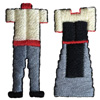 Have you ever heard about the tin embroidery? There is only one place in the world where it is made: Guizhou Province in China. Local craftswomen know this unique technique of embroidering, but even here, the Miao embroidery is on the verge of disappearing. Use your chance to learn more about it.
Have you ever heard about the tin embroidery? There is only one place in the world where it is made: Guizhou Province in China. Local craftswomen know this unique technique of embroidering, but even here, the Miao embroidery is on the verge of disappearing. Use your chance to learn more about it.
The Chinese craftswoman, 4th-generation embroider, Long Nu San Jiu will share with us a tiny piece of her knowledge about the tin embroidery. She’s been using this technique for 40 years.
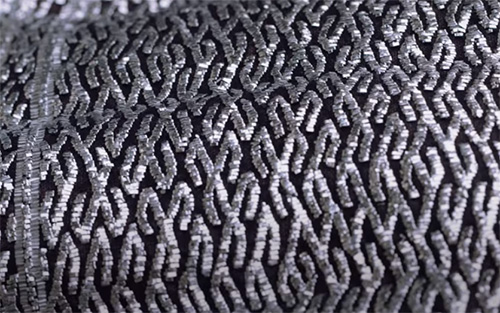
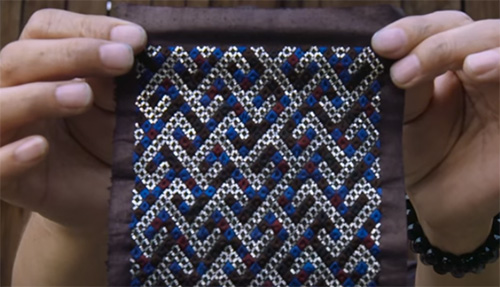
“My name is Long Nu San Jiu. I’m from Jianhe Country of Quiandongnan Prefecture. Tin embroidery is a long tradition of ours from hundreds – more than one thousand years ago. Every generation in my family embroiders. I am the 4th generation to do it. I even embroider when I eat. Nobody beats me on this”, Long Nu San Jiu tells us her story.
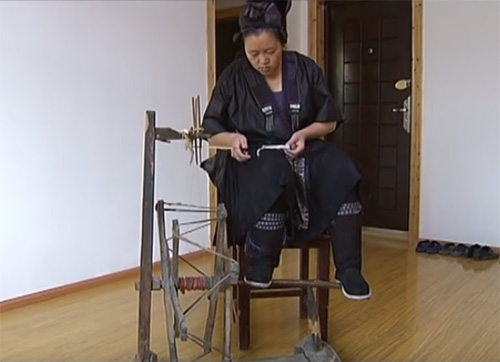
Long Nu San Jiu in folk attire is weaving a cloth on a vintage loom
Tin embroidery is a very special embroidery technique when long pieces of metal (tin foil) are used instead of threads. The craftswomen make the tin foil by themselves – they melt the tin and pour it onto the flat state to make tinplates. After that, the tinplate is cut into strips 1mm wide, right before it is used as a thread. Of course, all the strips should have exactly the same width to make the ready garment look good and qualitative.
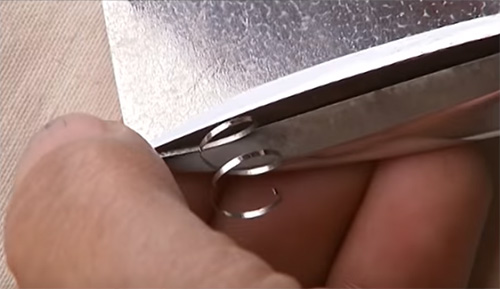
Cutting the tinplate into strips 1mm wide
“When you apply the tin, you can only handle one thread each time, which requires patience and body control. Only those who can endure loneliness could hold on”, comments Wang Li, the researcher of Jianhe Tin Embroidery. This craft is so very time-consuming and painstaking that not many people do it nowadays.
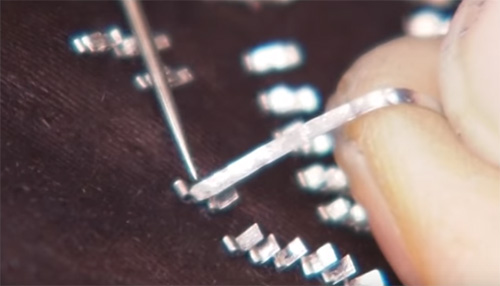
Process of tin embroidering
“If you do it fast, it won’t look good. It would be a shame for you to wear that. I can only make one outfit per year. To make a tin-embroidered outfit we weave cotton, dye the cloth, and then make a coat. The more I do it, the deeper I love it. The longer I stare at it, the more beauty I find”, continues Long Nu San Jiu.
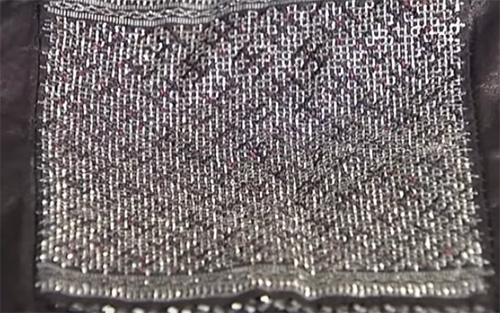
But even one costume per a whole year is comparatively fast. Only such skilled specialists as Long Nu San Jiu can do it. For an ordinary craftswoman, it is common to finish 5 sets of tin-embroidered clothing for a lifetime. Even when they are free from chores and give every single minute of their daytime to the work (as you’ve read earlier, women even embroider during their meals), the craftswomen can’t finish the attire fast.
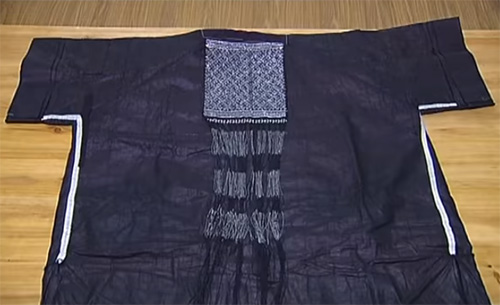
Also, traditionally, women sing during their embroidering. It is a very important part of the process. “If you only embroider and don’t sing, you won’t know the stories of your patterns. Someone who doesn’t sing well, doesn’t embroider well”, considers Long Nu San Jiu.
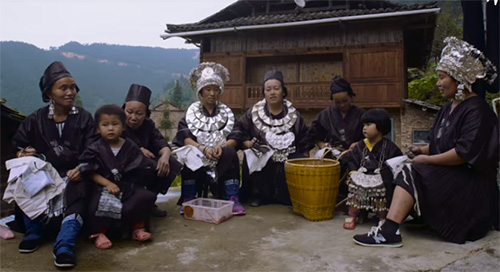
Miao women and girls in folk costumes gathered together to embroider
The tin embroidery is a traditional craft of Miao people, one of the largest minority groups in China. The national costume of Miao females is shining with silver due to the tin embroidery decorations, silver ornaments, and accessories (for example, large shiny headdresses). The Miao’s silver forging craft is widely known in China.

Miao females in traditional festive costumes and headdresses
But for the tin embroidery, Miao people don’t use silver – they work with tin because it is as white and shining as silver but easier to work with and less expensive. To include this metal into the traditional embroidery, the process requires micro-metal-carving.
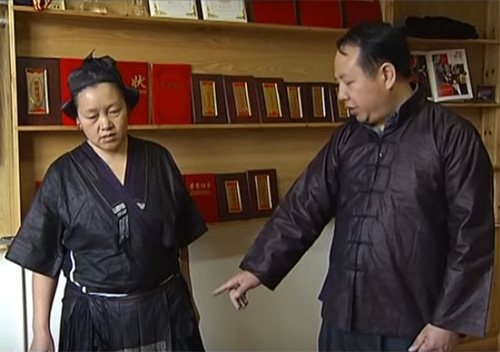
Long Nu San Jiu and Wang Li in traditional Miao clothing
And here is the national attire of a Miao woman. The comments are made by Wang Li, the researcher of Jianhe tin embroidery technique. “Let me begin from her foot. She wears gaiters around her legs. First, she wraps a piece of cloth around her leg, and then, she ties it with a striped belt. Above that, are pleated skirts which take a lot of time to make. Slowly, we should fold these pleats one by one. These embroidery patches are divided into a front part and a rear part. The front train and the rear train are made through many processes. The rear train is rather elaborate”. A simple headdress for a day-to-day usage or an intricate one for a festive occasion finishes the outfit.
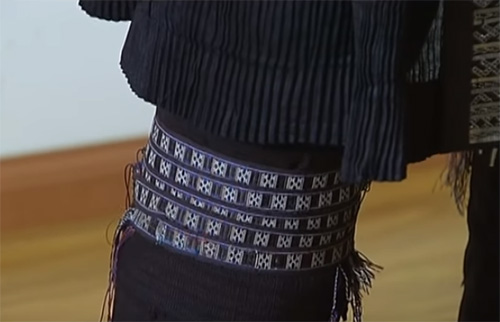
Part of a Miao female costume. A piece of cloth is wrapped around her leg, and tied with a striped belt
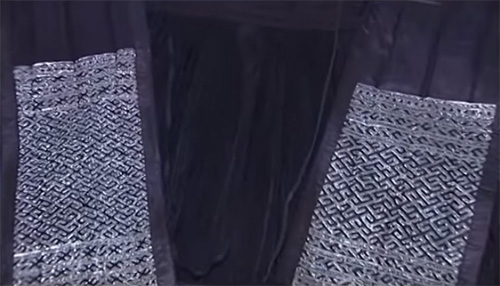
Front and rear train of a women’s skirt decorated with tin embroidery
To make a tin-embroidered garment, you have to prepare the cloth for the tin embroidering first. The pattern is sewn in ordinary threads and then tin strips are added to finish the embroidery design.
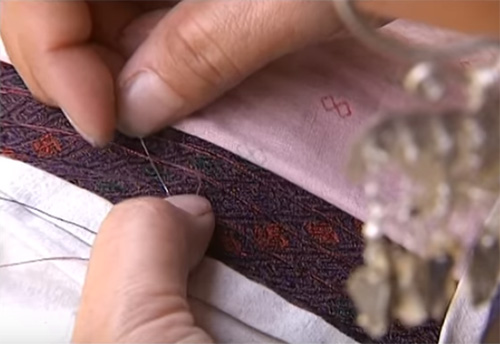
Embroidery pattern made by the ordinary threads before applying the tin embroidery
“These old patterns are passed down from the ancestors. Although other people don’t keep doing it, I do. People used to plead with me to teach, but now I plead with people to learn.
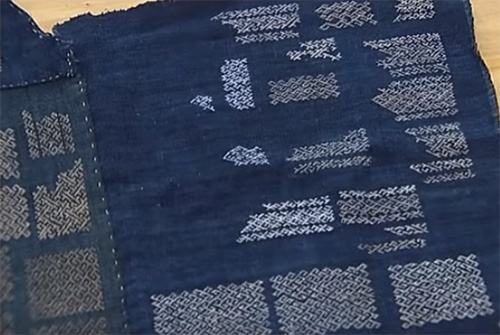
Vintage samples of tin embroidery patterns
I worry tin embroidery will disappear. Young people don’t want to do it anymore because they find it too hard to make a living with it. If we loose this art of our ancestors, it will be a great pity. Whoever is interested, I will teach. I will save one outfit and pass it on. Every generation needs to pass on something”, says Long Nu San Jiu.
(c)
